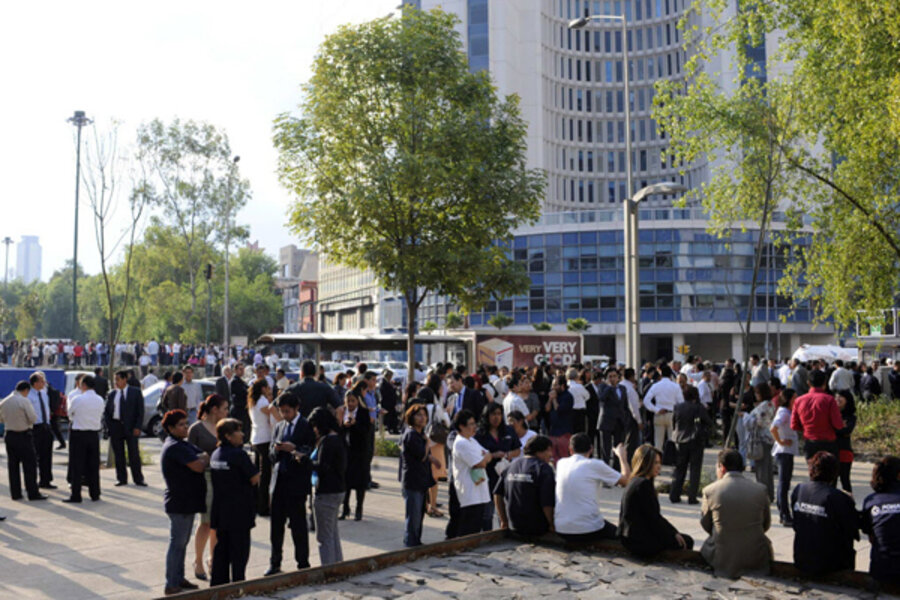Series of quakes hit Mexico: What's going on?
Loading...
| Mexico City
Yesterday, at my favorite taco stand, a woman who cleans houses in the neighborhood struck up a conversation with the vendor. "I keep thinking I am dizzy, that the earth is shaking," she said. He nodded in agreement. "Ah, that earthquake," he said.
By now, weeks after the March 20 earthquake rattled Mexico City with a magnitude of 7.4 – the strongest the city has felt since a devastating 1985 quake that killed thousands – most residents here would have forgotten the temblor that struck just after noon, swaying buildings and sending residents into the streets. There were two deaths and plenty of damage, a reminder of how seismically vulnerable we all are.
But the quakes haven't seemed to stop, becoming a reoccurring conversation topic at taco stands, gyms, hair salons, parks, and water coolers across the city.
In fact, just four hours after the woman, munching on a taco of hard boiled egg and rice, complained of her imagined dizzy spells the earth shook again. Yesterday, a 6.4 magnitude quake struck western Mexico, and caused Mexico City, 200 miles away, to rattle. It is the fourth earthquake or aftershock of a magnitude over 6.0 to impact the city in four months. (Separately a 6.9 quake hit the waters of northern Mexico last night at 12:15 a.m.)
What is going on? This is what people are wondering: Is it just random? Does it mean the earth is releasing tension, meaning a mega quake like the 1985 one is less likely? Or is it the prelude to something bigger? Some have even joked on social media that this is a sign that the Mayan calendar slating 2012 as the end of the world, according to some beliefs, is actually true. Most of all – we all want to know – when are we going to start feeling like we live on stable ground again?
In reality, there is no good answer to these questions, says Don Blakeman,a geophysicist with the Colorado-based US Geological Survey. An earthquake is by nature the release of stored energy. So it's unlikely that another one in the exact same spot will occur right away. But it doesn't mean that enough energy was necessarily released to stave off quakes in other spots along the fault line. And sometimes it causes shifts that can create other potential risk areas. And of course over time the energy builds up again.
So what of the fact that four quakes have struck Mexico City in four months? It has resulted in bloggers writing about what it means and adding to the murmurs of concern on the street, but in truth, "it doesn't really mean anything," Mr. Blakeman says.
Mexico's seismological service has reported close to 400 aftershocks since the March 20 quake, according to the Associated Press.
I for one am right with the woman from the taco stand: The ground keeps moving as far as I am concerned. I felt it twice yesterday while working in a coffee shop, the same place I was when the earthquake struck March 20. I looked up. No one seemed to move. It must be my imagination, I thought.
But when I got home, the woman who cares for my baby also thought she felt the house tremble, at about the same time. So maybe we aren't going crazy: maybe we are just hyper aware of the earth's movements now.
In any case, we all just want a reprieve. Now. (And when I say now, I do mean right now – I feel the earth moving.)
Get daily or weekly updates from CSMonitor.com delivered to your inbox. Sign up today.







